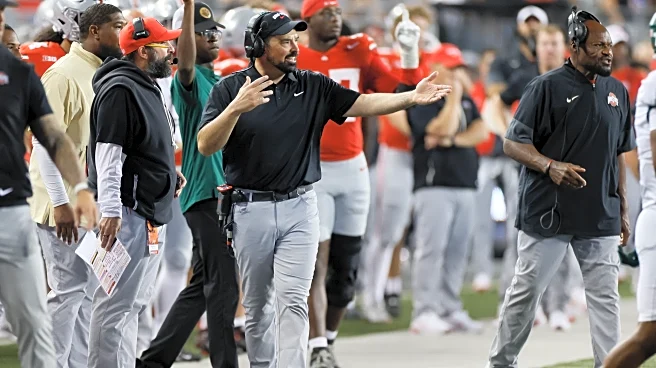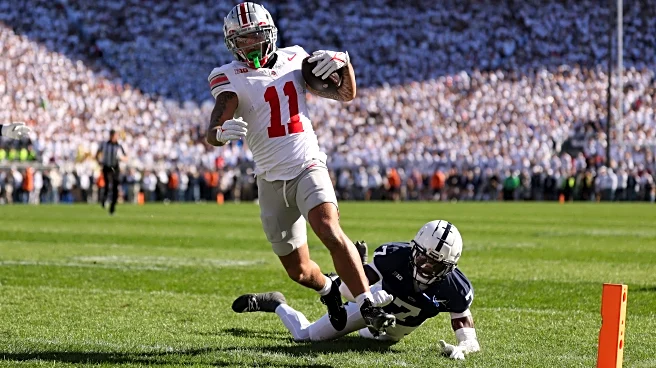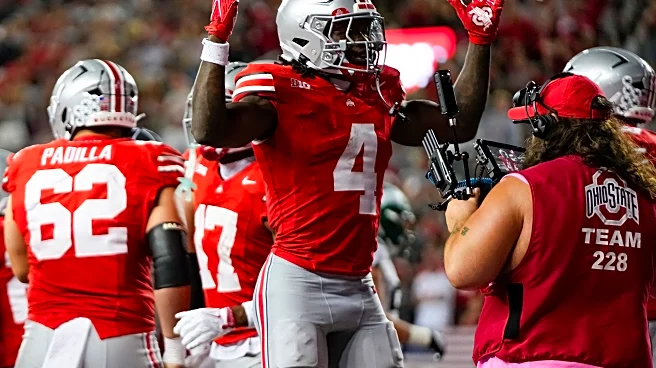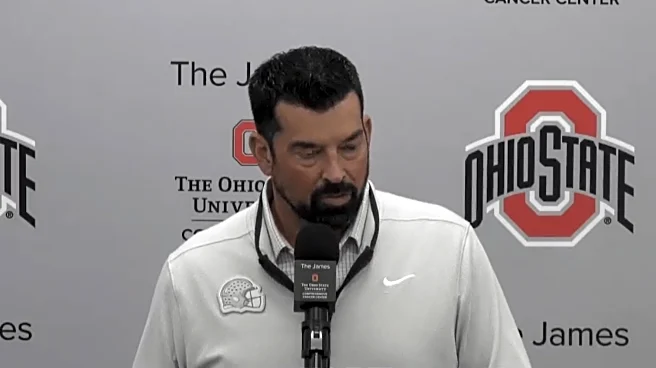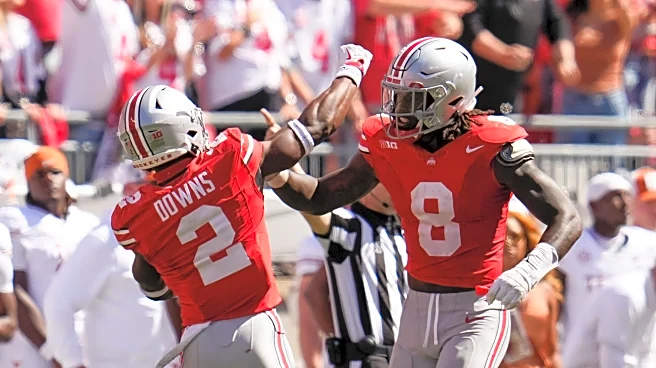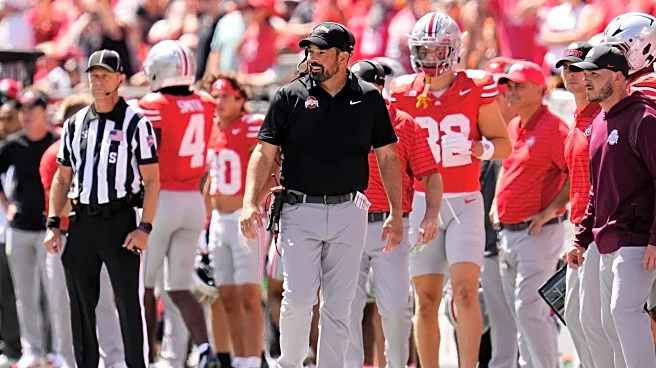Through three games of the 2025 season, one clear running-back narrative has emerged in Columbus. True freshman Bo Jackson, the Cleveland product who enrolled early and took advantage of spring work, is
not just flashing; He’s changing how Ohio State coaches allocate carries.
Jackson’s two 100-yard games (108 vs. Grambling State, 109 vs. Ohio) have him sitting as the team’s leading rusher (217 yards) on just 18 carries (12.1 yards per carry). Those numbers are the blunt evidence behind a subtler truth: Jackson’s explosiveness is forcing the Buckeyes away from a static pecking order of CJ Donaldson and James Peoples and toward a merit-based, matchup-driven rotation centered on what each back does best.

From clear roles to a shifting rotation
Ohio State entered 2025 with reasonable assumptions about how the backfield would shake out.
Transfer C.J. Donaldson, the physical, between the tackles runner from West Virginia was expected to be the early down and short-yardage workhorse after opening with an efficient, physical day in the season opener. James Peoples, a sophomore with a pro-style burst and receiving chops, was slated to rotate as the every-down complement.
Those plans haven’t been erased, they’ve been re-weighted.
Donaldson still leads the group in total carries (33) and has been the team’s dependable short-yardage option early, while Peoples has produced somewhat steady efficiency across his snaps. But whereas Donaldson’s 151 yards on the season sit at a modest 4.6 yards per carry, Jackson’s efficiency and chunk plays (two long gains plus a long of 64 vs. Ohio) have altered how the staff thinks about opponent-by-opponent game plans.
What makes Bo different
The game logs underline the point. Jackson’s workload through the first three games is small but explosive, nine carries and 108 yards (1 TD) against Grambling State, nine carries and 109 yards against Ohio. Those are not accidental box-score outliers, they reflect situational usage designed to leverage his burst and home-run ability.
By contrast, Donaldson’s use has been heavier in early-down sequences and goal-line looks (he scored the short TD in the opener), and Peoples has been used as a secondary grinder/third-down option who also offers receiving value. In short, Jackson has already earned starter-level production without needing to be the guy on every snap.
Why does the staff trust Jackson so quickly? The tape shows a couple of obvious reasons.
At 6-0 and about 217 pounds, Jackson marries downhill power with sudden lateral explosion, he’s as comfortable getting north-south and bowling through contact as he is bursting through a crease and outrunning pursuit. That synthesis creates a very high yards-per-carry ceiling, especially on plays that break to the perimeter.
Against Grambling he ripped an 11-yard score and several long gains. Against Ohio he produced the long, game flipping run that briefly threatened the goal line before the staff rotated other backs back in for short-yardage work.
Put simply, when lanes open, Jackson turns short gains into explosive plays more often than his teammates have to date.
The path ahead
Still, three items will determine whether Jackson “officially” becomes RB1 rather than simply the most dangerous option in the committee.
(1) pass protection, can he consistently pick up blitzes and protect the quarterback on dropback downs? (2) ball security, the staff has emphasized this repeatedly as the gating factor that dictates snap increases for a rookie, and so far Jackson has checked the box. (3) durability across a full season of Big Ten contact.
If Jackson continues to flash and continues to pass those checks, his share of carries will grow organically, but if he struggles in pass-pro or fumbling risk increases, the staff will lean back on Donaldson’s experience and Peoples’ versatility. Ryan Day has signaled patience but readiness to reward.
What does this look like across the rest of the season? Expect match-specific plans.
Against teams that crowd the box or try to bully between the tackles, Ohio State will still favor Donaldson and Peoples in short-yardage and sustaining drives. Against defenses that play lighter and dare OSU to beat them with speed, Jackson’s role will expand as a tempo-changer and chunk-play threat.
Over time, if Jackson holds up to the physical demands and continues to produce explosive gains, his snap share and touches will likely become the largest single piece of the backfield pie, much to the delight of Buckeye fans watching a freshman’s rise from the stands.
The bottom line is that Bo Jackson has not been officially crowned the back who will carry every snap. But he has done the thing that matters the most in modern college football. He has earned the coaches’ trust through production and checked the boxes the coaching staff demands from a rookie (ball security, basic pass protection, and reliable decision-making).
That combination has produced a de-facto reordering of the pecking chart, Jackson is the explosive engine the offense now turns to for chunk plays, Donaldson the early-down grinder and red-zone battering ram, and Peoples the minimally used Swiss-army knife.
If Jackson keeps delivering, and the staff keeps trusting, that ordering will become official in the box scores and depth charts before long.
For now, the Buckeyes have a luxury most teams crave — three highly complementary running backs, and the matchup flexibility to make the rest of the country defend everything.

